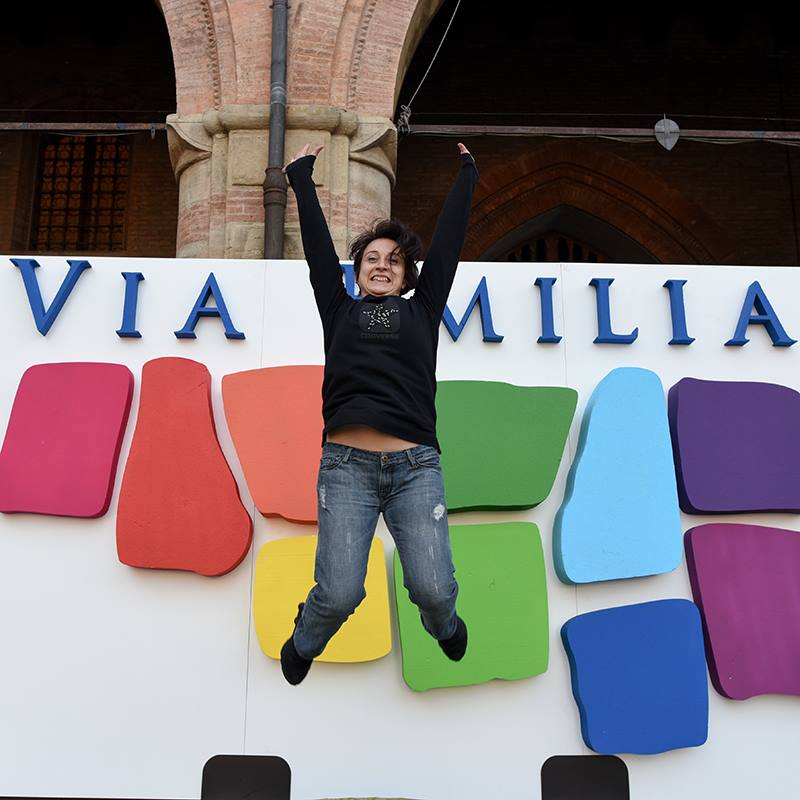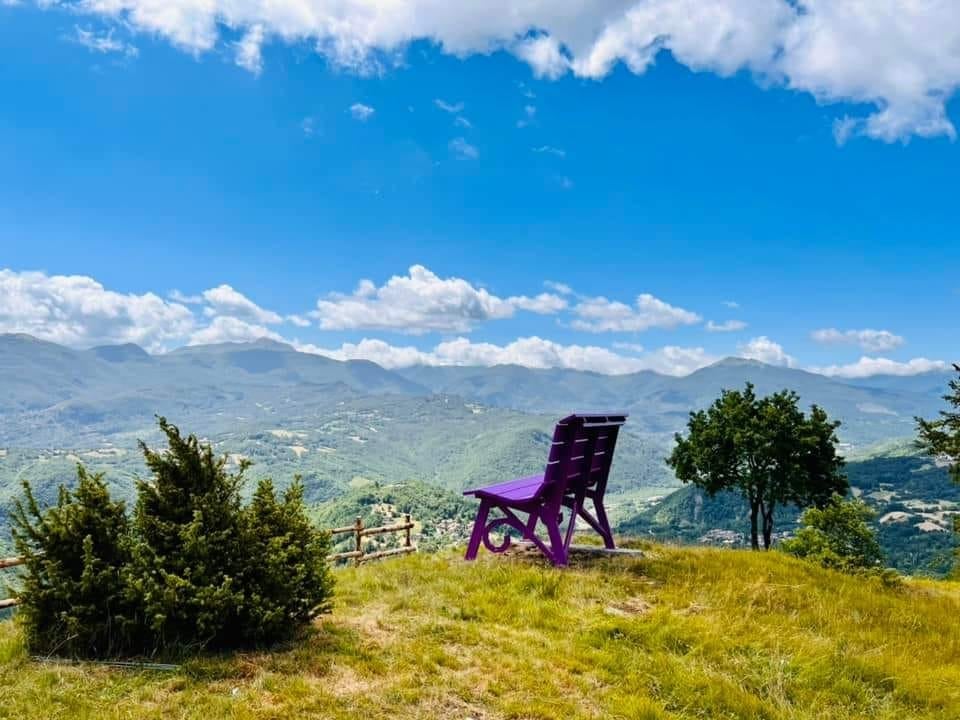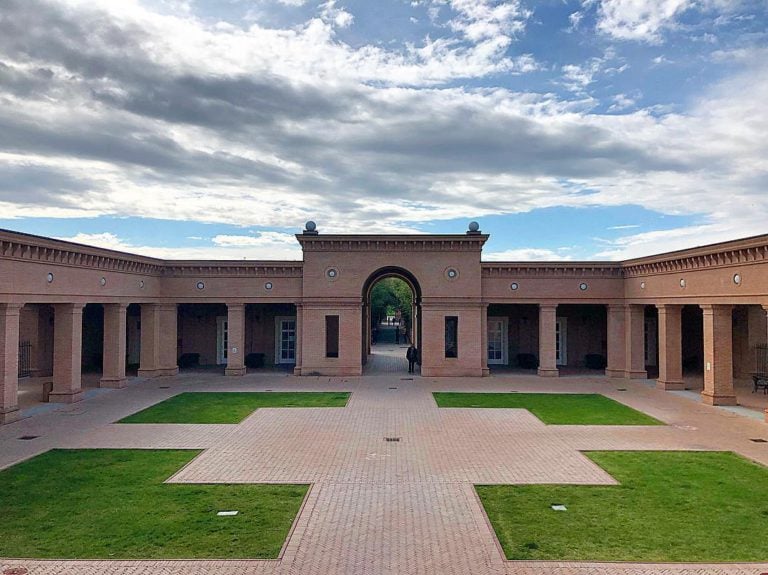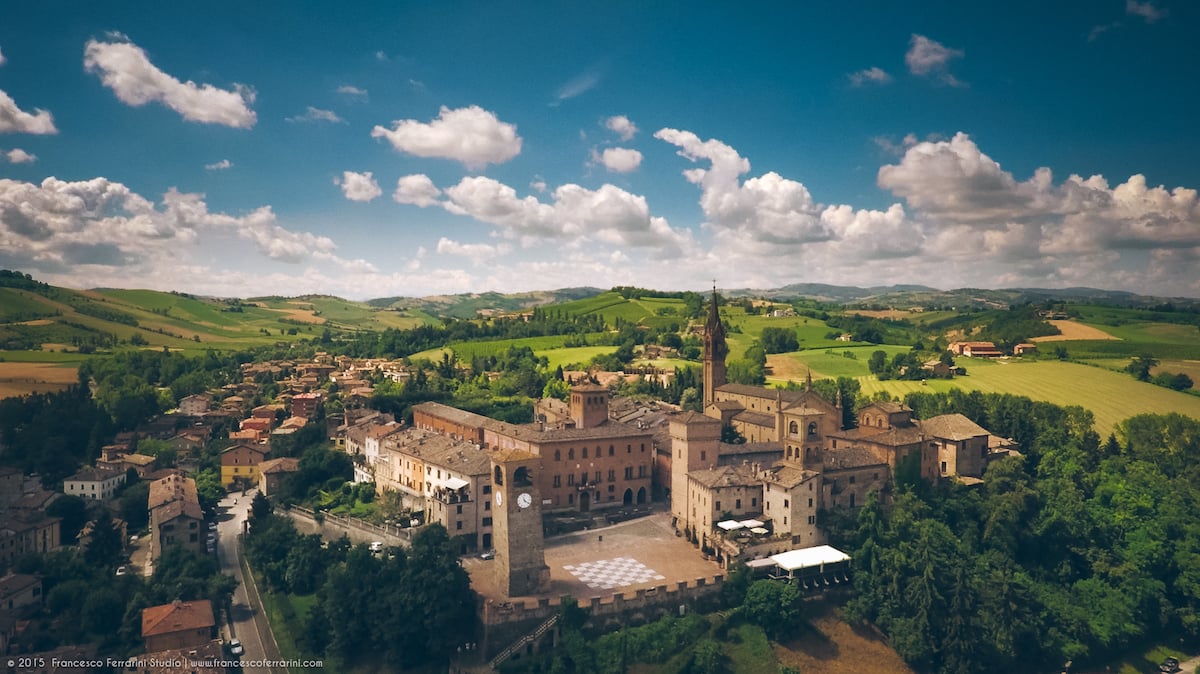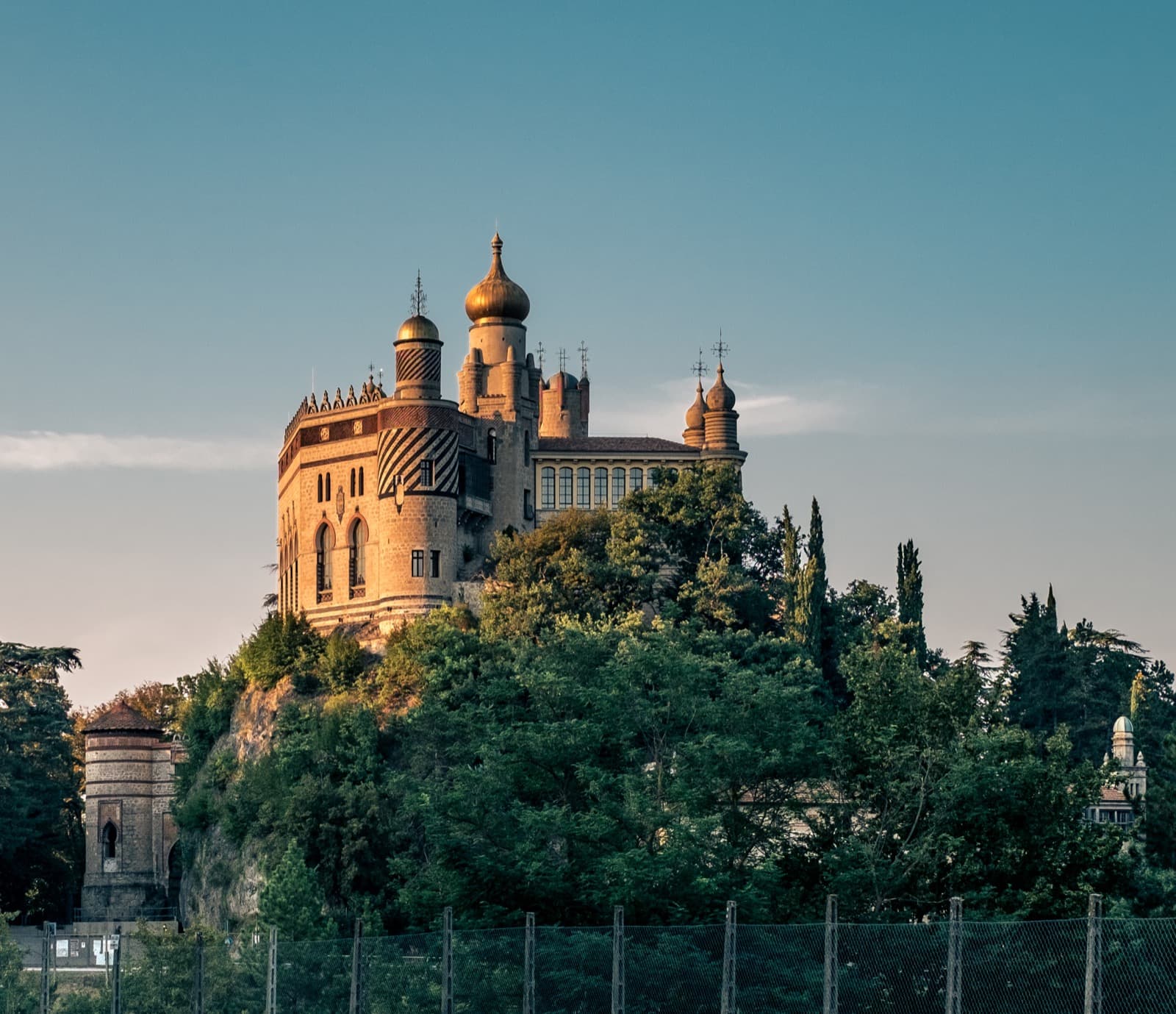
Time
24 h
It is well known that Italy is a country with intense volcanic activity. When we use the word volcano, we refer to a fissure in the earth’s crust through which high temperature solid and fluid materials are emitted, either continuously or discontinuously.
In Italy we can find 4 types of volcanoes:
- active volcanoes = they show their activity continuously or at short or long intervals, up to hundreds of years;
- quiescent volcanoes = they have had eruptive activity in the last few centuries and still emit gas and water vapour;
- extinct volcanoes = they have not erupted for over 10,000 years:
- submarine volcanoes = some ones area still active, others now are extinct.
And then there are the volcanoes of Emilia-Romagna, peculiar formations that, although not actually volcanoes, are defined as such because of their shape or the emission of flames. Let’s find out more about them.
The “Volcano” of Tredozio – The smallest volcano in Italy
Where: Tredozio (Forlì-Cesena)
Coordinates: 44.0463969,11.7713522
Admission: free entry
In the Romagna Apennines, precisely between the upper Montone and upper Tramazzo valleys, lies the smallest volcano in Italy.
Located on Mount Busca in Tredozio, it is actually a pseudo-volcanic phenomenon called a burning fountain, although its shape and the presence of the fire are reminiscent of a real volcano.
Here, the flames are the result of a gaseous hydrocarbons (mainly methane) release from the ground, which spontaneously ignite on contact with oxygen, remaining perpetually alight.
The presence of perpetual fire on Mount Busca has been known for centuries among the inhabitants of the area, so much so that one of the first written testimonies dates back to 1577 when Leandro Alberti, in his work ‘Descrittione di tutta Italia‘, reported it as ‘a hole four feet wide where a flame of fire comes out’.
On a clear and calm day, you can glimpse the sea, the Cesenatico skyscraper and the three fortresses of San Marino from the hill. Located near the Monte Busca Village, you can get there by car, motorbike or bicycle, although getting there on foot takes on a different charm.
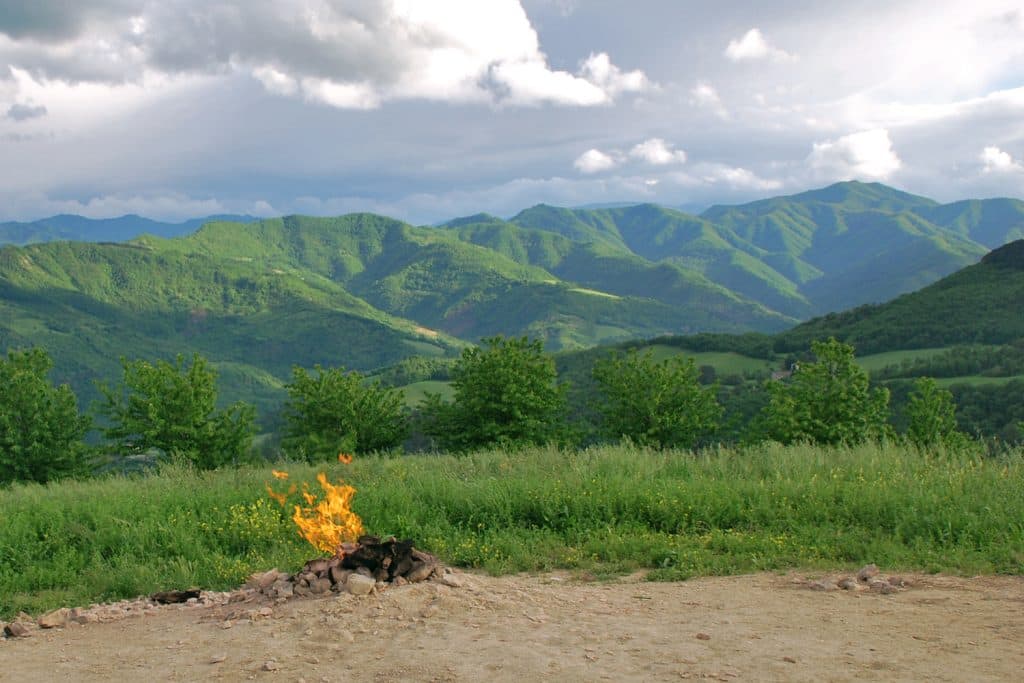
Not to be missed in the surroundings:
- The villages of Portico e San Benedetto
- The village of Modigliana
- La Romagna dello Spungone
Mud volcanoes
Another ‘pseudo-volcanic’ geological phenomenon can be observed in the hilly area of Emilia-Romagna, which is rich in gullies: these are the so-called eruptive sauces, which originate from natural deposits of gaseous hydrocarbons, particularly methane.
The rising up from underground of clayey mud mixed with such hydrocarbons gives rise to cones that resemble miniature volcanoes. When all is silent, one can even hear the faint mutterings produced by the bubbles of released gas.
The name ‘salsa‘ derives from the high level of salt in the muddy water, a trace of the sea that occupied today’s Po Valley up to 1 million years ago.
Not being related to igneous volcanism (typical of volcanoes), the emitted mud is cold, i.e. its temperature is similar to that of the outside environment.
Once there, you will feel as if catapulted into a lunar landscape, especially if you are lucky enough to visit at a time of intense ‘volcanic’ activity.
The best known are those in the Salse di Nirano Nature Reserve, but Emilia also has others.
Salse di Nirano
Where: Fiorano Modenese (Modena)
Coordinates: 44.5158248,10.8215468
Facilities & Services: guided tours and educational workshops on request (email: salse.nirano@fiorano.it), Centro Visite Ca’ Tassi and Ecomuseo Ca’ Rossa
Admission: free entry
The Salse di Nirano Nature Reserve of Fiorano Modenese, the first nature reserve in Emilia-Romagna with over 209 hectares, together with that of Aragona (AG) is the most important ‘salse’ complex in Italy and one of the most important in Europe.
Visitors can choose from three itineraries to explore it: the Tour of the Salse, the Mud Volcanoes Trail, Stage 2 (from the Rio Rocca Valley to the Salse di Nirano) and the Mud Volcanoes Trail, Stage 3 (from the Salse di Nirano to the Salse di Puianello).
The surrounding flora has adapted to the presence of clay and the considerable salinity of the soil, while the fauna consists of mammals and birds typical of the habitats around the gullies.
Not to be missed in the surroundings:
- The town of Maranello
- The towsn of Sassuolo
- Castles, fortresses and towers in the land of the Este family
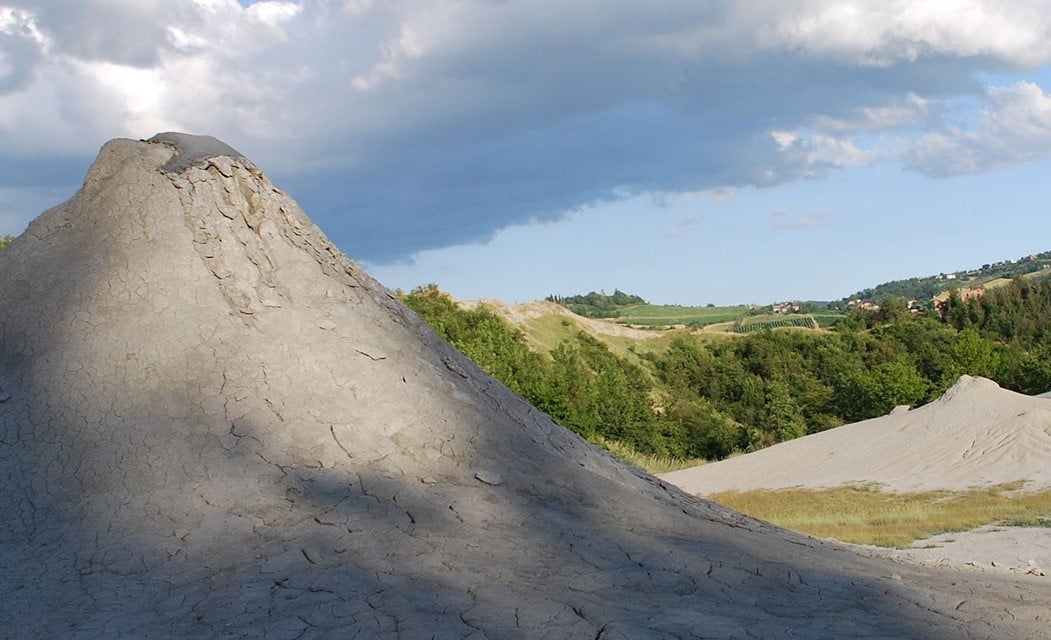
Salse di Regnano (o di Querciola)
Where: Viano (Reggio Emilia)
Coordinates: 44.5586394,10.5709183
Facilities & Services: guided tours on request
Admission: free entry
The Salse di Regnano of Viano is an important place in the history of Italian natural sciences as it was long studied by the great 18th century scientist from Reggio Emilia Lazzaro Spallanzani, who is regarded as the father of this discipline.
The typical vegetation of the area is that of the lutivome salt environments of the Emilian salsas.
Not to be missed in the surroundings:
- The big benches of Baiso, Casalgrande and Castellarano
- The Matildic Castles of Canossa and Rossena
- The villages of the Reggio Emilia Apennines
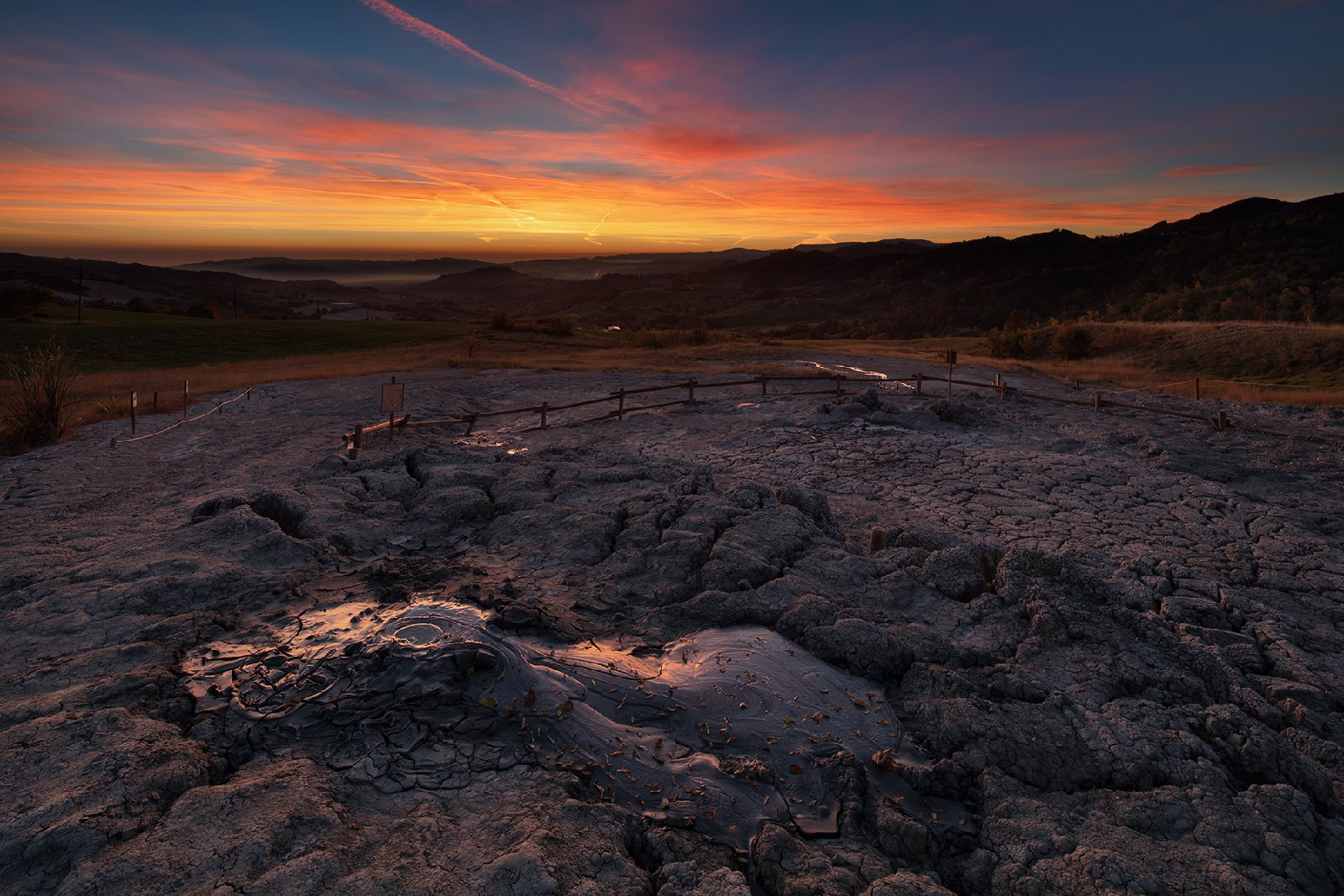
Parco dei Barboj
Where: Lesignano de’ Bagni (PR)
Coordinates: 44.630488,10.3275048,
Facilities & Services: bar with diner nearby
Admission: Free entry
These phenomena occur as numerous small volcanoes up to 1 meter high within Parco dei Barboj in the hills south of Parma, in Lesignano de’ Bagni.
Some signposted paths connect the park to the nearby Torre di Traversetolo, where you can find similar phenomena.
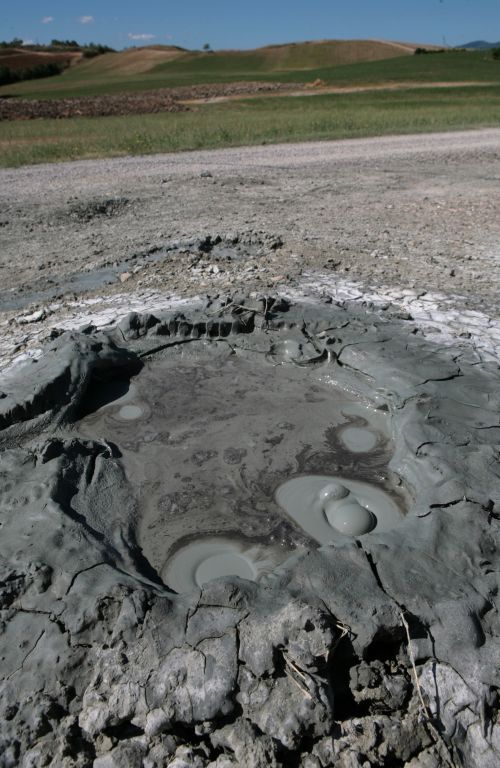
Not to be missed in the surroundings:
Author
You may also like
Big Benches in Emilia-Romagna, Italy
by Celestina Paglia /// August 4, 2022
Get lost and find your way: Labyrinths in Emilia Romagna
by Elisa Mazzini /// April 19, 2019
Consigli di viaggio e idee per un weekend sulle colline modenesi
by Celestina Paglia /// May 11, 2022

Interested in our newsletter?
Every first of the month, an email (in Italian) with selected contents and upcoming events.
